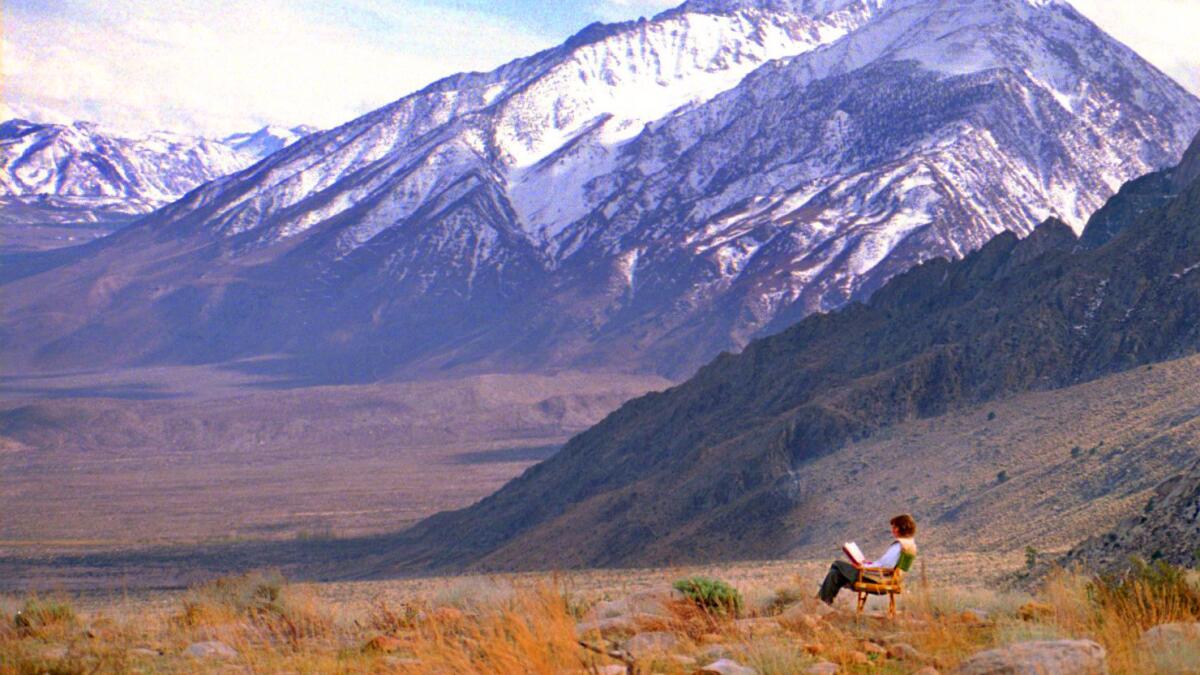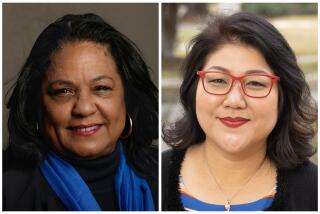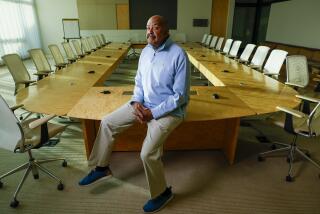Mollie Lowery, to the end, was a saint to those living on the streets

For decades in Los Angeles, no one was more dedicated to comforting the sick, the destitute and the forgotten than Mollie Lowery.
Mayors, supervisors and other public officials sought her out for policy advice.
Countless addled, suffering souls who could not help themselves, or would not be helped by others, were reeled in by Lowery. Some of them joined her team, roaming the streets of Los Angeles on a quest to help more people.
Tall and blade-thin, Lowery carried herself with great humility and spoke softly, but worked fiercely.
She was determined to do, as she put it, whatever it takes, for as long as it takes, to help homeless people -- especially those with severe mental illness -- rebuild their lives.
Lowery, who was still on the job at Housing Works in Hollywood until just a few weeks ago despite the cancer that was ravaging her, died at her home in Highland Park early Monday. She was 70.
She’s like my mom. She took me out of the gutter.
— Former skid row resident Karen Carson
“She’s like my mom. She took me out of the gutter,” Karen Carson, a former skid row resident, said at Lowery’s home on Saturday as friends kept vigil. “She nurtured me. She took care of me.”
Carson became both a friend and a colleague of Lowery’s as a caseworker at Housing Works. Such transformations were not uncommon for those who had the good fortune to cross paths with Lowery.
Lowery grew up in the San Fernando Valley and was briefly a Catholic nun but didn’t find that to be a comfortable fit. She knew that public service was for her, though, and eventually found her way to the nonprofit Ocean Park Community Center in Santa Monica.
For all her generosity and love, Lowery was also tough, demanding that her clients hold up their end of the bargain.
When mental hospitals were closed in the 1970s, she once told me, the streets suddenly filled with untreated people who had nowhere to go. Lowery explored skid row to see what other agencies were doing, and she liked the model at the Downtown Women’s Center.
In 1985 she and downtown businessman Frank Rice founded LAMP Community, the Los Angeles Men’s Project, with a philosophy that remained consistent throughout Lowery’s career.
She would treat every person with dignity.
She would work for as long as it took to earn a person’s trust, knowing that people with nowhere to live are often driven into isolation by illness, stigmatization and the instinct to self-medicate their psychological pain.
She would offer food, clothing, a bed, a shower and friendship. And once she earned someone’s trust, she and her staff would provide housing, treatment and ongoing care.
For all her generosity and love, Lowery was also tough, demanding that her clients hold up their end of the bargain. They had to set goals and work on a plan to achieve them, and there were consequences for transgressions.
A few years ago, when my friend Nathaniel Ayers was going through a rough time and was about to lose his skid row apartment, I knew exactly whom to call.
Ayers was tormented at the time, suffering but refusing treatment or help. Lowery said assisting him would take a lot of work, but she was committed to his welfare, and she told him as much. She said she would stick with him. And she did.
Lowery and her staff gradually earned his trust and respect, got him into a new apartment and helped shepherd him through a series of hospitalizations, always with the goal of pushing the system to find a better living situation for him.
Lowery never gave up on anyone, and in the case of Nathaniel, she was still talking strategy when I visited her two weeks ago.
She understood the complexities of mental illness, poverty, homelessness and public policy measures to address all those things. And she was a no-nonsense, impatient critic of policymakers, saying that for all the hand-wringing and blue-ribbon studies, the solution was pretty simple in the end.
More housing for sick, poor people, and more continuing support for those in need.
Several weeks ago, Lowery hosted a gathering at her home and pulled out scrapbooks filled with photos of the ranch she ran for several years in Bishop, when she took a break from the harshness and confinement of skid row.
She loved talking about those years of her life, when skid row clients shuttled up to the high desert for R&R. They worked as ranch hands, tended to animals, and were restored, as was Lowery, by the natural glory of the eastern Sierra.
In the last few months, Lowery sent emails and letters to friends, assuring us that she was not afraid of death, and that she knew the spirit of giving that marked her life would be carried forward by others.
“Please stay the journey with me,” she wrote in one email. “We got lots of work to do.”
On Saturday, I sat at Lowery’s bed and held her hand. She was sedated, briefly opening one eye in recognition.
I told her she had improved the lives of thousands, making a lasting difference in the city she loved.
I told her she had educated and inspired me and so many others.
I said thanks, and I left her side in awe of Mollie Lowery and the life she lived.
ALSO
Who’s governor of California? This week, it’s not Jerry Brown
New law will require temporary license plates in California
Horses, chickens, pigs and a bull: a menagerie of 770 pets have been displaced by the Sand fire
UPDATES:
5:24 pm: This article was updated to correct Mollie Lowery’s age. She was 70.
More to Read
Sign up for Essential California
The most important California stories and recommendations in your inbox every morning.
You may occasionally receive promotional content from the Los Angeles Times.











